This post may contain affiliate links. Please read our disclosure policy.
Learning how to make kombucha at home is easier than you might think, and it’s about to become your new favorite kitchen project! This fizzy, fermented tea has taken the wellness world by storm, and for good reason – it’s delicious, packed with potential health benefits, and surprisingly simple to brew in your own kitchen.
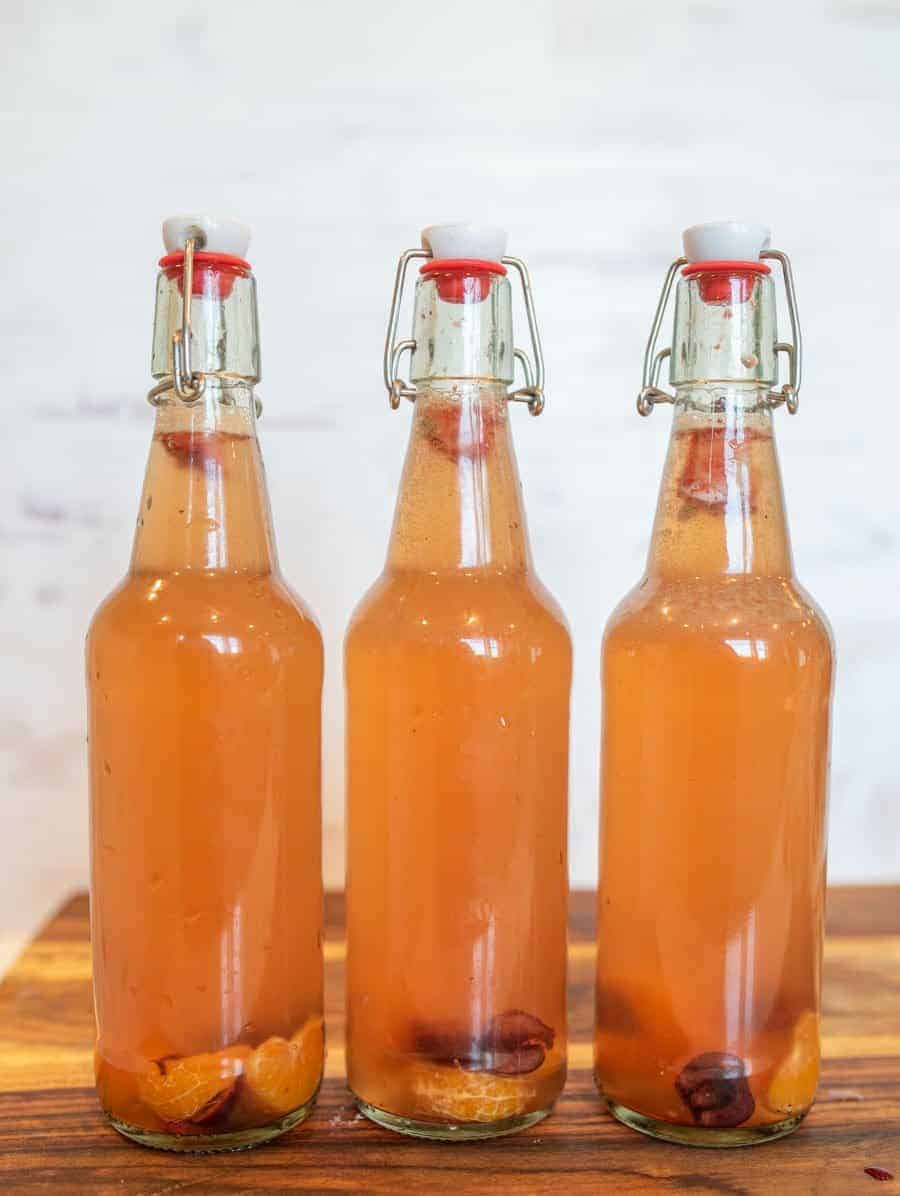
Spoiler alert: Making homemade kombucha is easier than you think! You don’t need special equipment, and it’s inexpensive! This recipe makes 1/2 gallon every 5-7 days.
If you have even considered learning how to ferment something, this is a great place to start! It takes just a little bit of hands-on time once a week to make your own kombucha. Give it a try! You might just find that you want to get some sourdough starter going too!
{VIDEO} DIY Kombucha: How to Make Kombucha at Home
Table of Contents
- {VIDEO} DIY Kombucha: How to Make Kombucha at Home
- Why You’ll Love This Recipe
- Supplies Needed
- How to Make Kombucha
- Recipe FAQs
- History of Kombucha
- What is a SCOBY?
- Where to Get a SCOBY
- Small Batch Kombucha Brewing Method
- A Note About Caffeine
- Best pH Levels for Finished Kombucha
- Handy Kombucha Making Chart
- More Fermenting Recipes to Consider
- How to Make Kombucha at Home Recipe
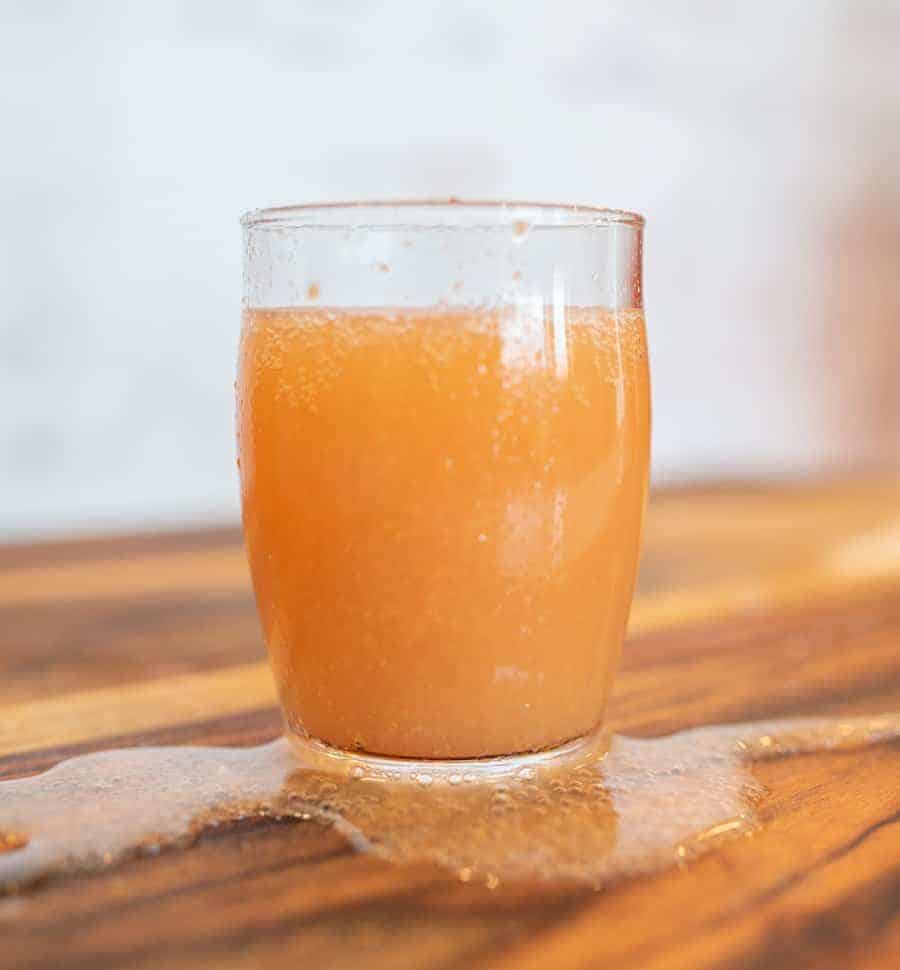
Why You’ll Love This Recipe
- It’s so easy!
- If you love to drink kombucha, it will save you a ton of money.
- It has lots of health benefits because of the fermentation.
Recipe Ingredients
- Sugar: Use organic sugar for best results. Avoid alternative sweeteners.
- Tea: Use organic black tea. You can also use a mix of white and/or green tea in addition to your black tea.
- Water: Untreated tap water works great. If your tap water is treated, you’ll want to use filtered or distilled water.
- SCOBY: This is the live and active culture that turns your sweet tea into kombucha. Get one from a friend, or buy a starter SCOBY online. You can use one over and over again and they’ll grow a new one each brewing cycle, so it’s a great one-time investment.
See the recipe card below for full information on ingredients and quantities
Supplies Needed
You don’t need a whole lot of supplies.
- For this method, I use one 1/2 gallon mason jar (with a screw-on lid and a piece of fabric to cover the top).
- If you are going to do a second fruited ferment, you’ll need six 16-ounce brewing bottles.
Extra Tip: I love The Big Book of Kombucha. If you are just starting out buy it or check it out from the library. It’s a great resource!
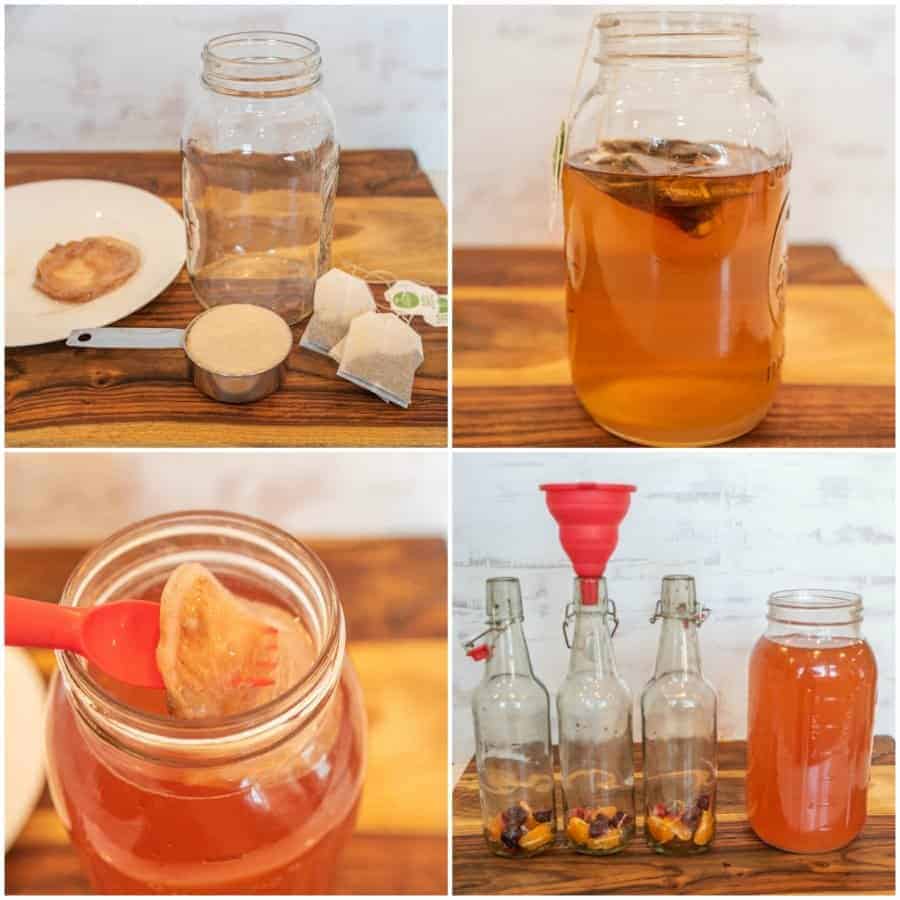
How to Make Kombucha
- Make sweet tea.
- Add a SCOBY and let sit for 5-7 days.
- Bottle the kombucha, starting the second fermentation if desired.
- Drink and enjoy!
Recipe FAQs
Mold is NOT good. Throw away any liquid or SCOBYs that mold (this isn’t common). Mold might look like colors on the scoby or floral blooming dots. Yeast in kombucha might look like dark brown snotty strings (delightful, right?), but it isn’t mold.
The short answer is yes. The chemical reactions between bacteria, yeast, and sugar result in the formation of a small amount of alcohol during the fermentation process. If there was more than a tiny bit of alcohol in it, they wouldn’t sell it to everyone at the grocery store.
It is tangy, tart, and a bit sour. It has been compared to a sour apple taste with a tad more sweetness.
I’d highly recommend finding The Big Book of Kombucha! It’s where I learned everything, and it answered Buy it or find it at the library!
Yes! You can use black tea, white tea, green tea, or a combination of any of these. I do suggest using organic tea for the best results with the healthy bacteria.
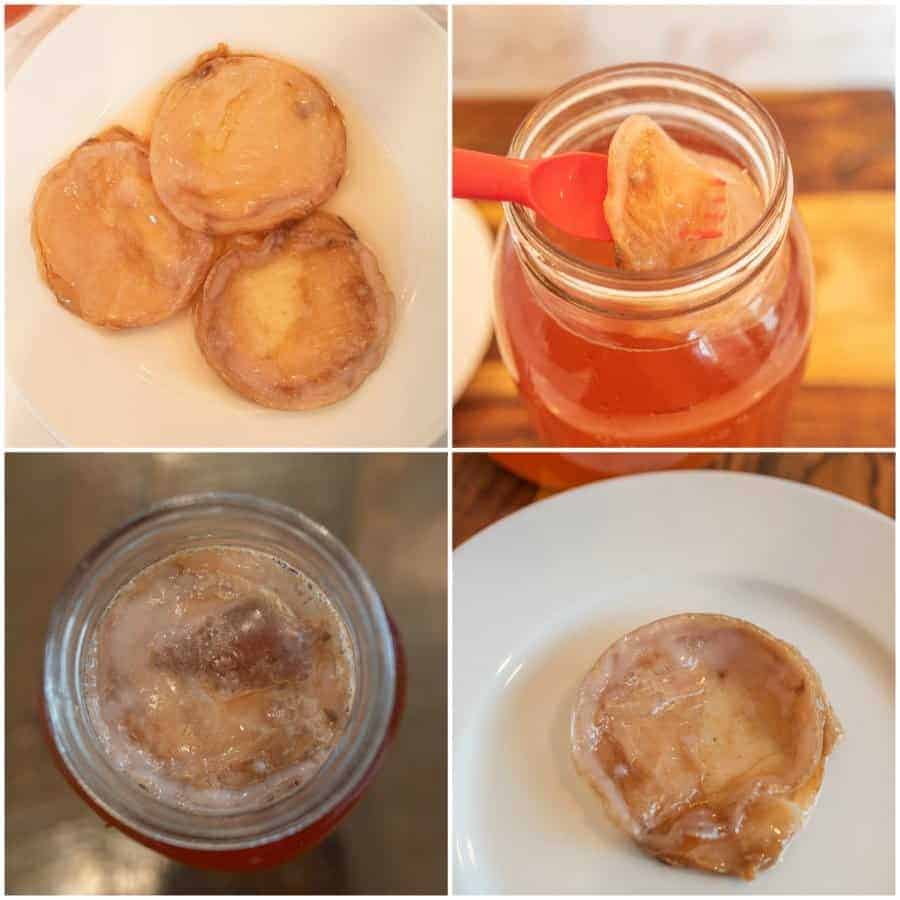
History of Kombucha
“Kombucha originated in Northeast China around 220 B.C. and was initially prized for its healing properties. Its name is reportedly derived from Dr. Kombu, a Korean physician who brought the fermented tea to Japan as a curative for Emperor Inkyo. Eventually the tea was brought to Europe as a result of trade route expansions in the early 20th century, most notably appearing in Russia (as “Kambucha”) and Germany (as “Kombuchaschwamm”). Despite a dip in international popularity during WWII due to the shortage of tea and sugar supplies, kombucha regained popularity following a 1960s study in Switzerland comparing its health benefits to those of yogurt.”
-Christina Troitino of Forbes found in The Big Book of Kombucha
Basically, kombucha is a fermented tea that is made with water, tea, sugar, bacteria and yeast. Besides the health benefits of kombucha, I love the taste, and it is so much cheaper to brew at home than to buy from the store.
What is a SCOBY?
SCOBY stands for “symbiotic culture of bacteria and yeast.” It looks like a mushroom and has the texture of a gummy bear. The larger the SCOBY, the faster the brewing cycle.
The SCOBY is the equivalent of a sourdough starter or kefir grains in other fermenting processes. It’s the culture that turns your sweet tea into nourishing and zippy kombucha.
Where to Get a SCOBY
The SCOBY is the only thing you’re really going to have to find to make kombucha at home.
- You can buy a SCOBY online.
- You can get a SCOBY from a friend. They multiply, so they are very easy to share.
- You can attempt to grow your own SCOBY from unflavored raw kombucha from the store.
No matter how you get one, you need one before you start AND you’ll need 1/2 cup of unflavored kombucha to go with it. Again, get this from a friend. A SCOBY bought online will come with this starter liquid.
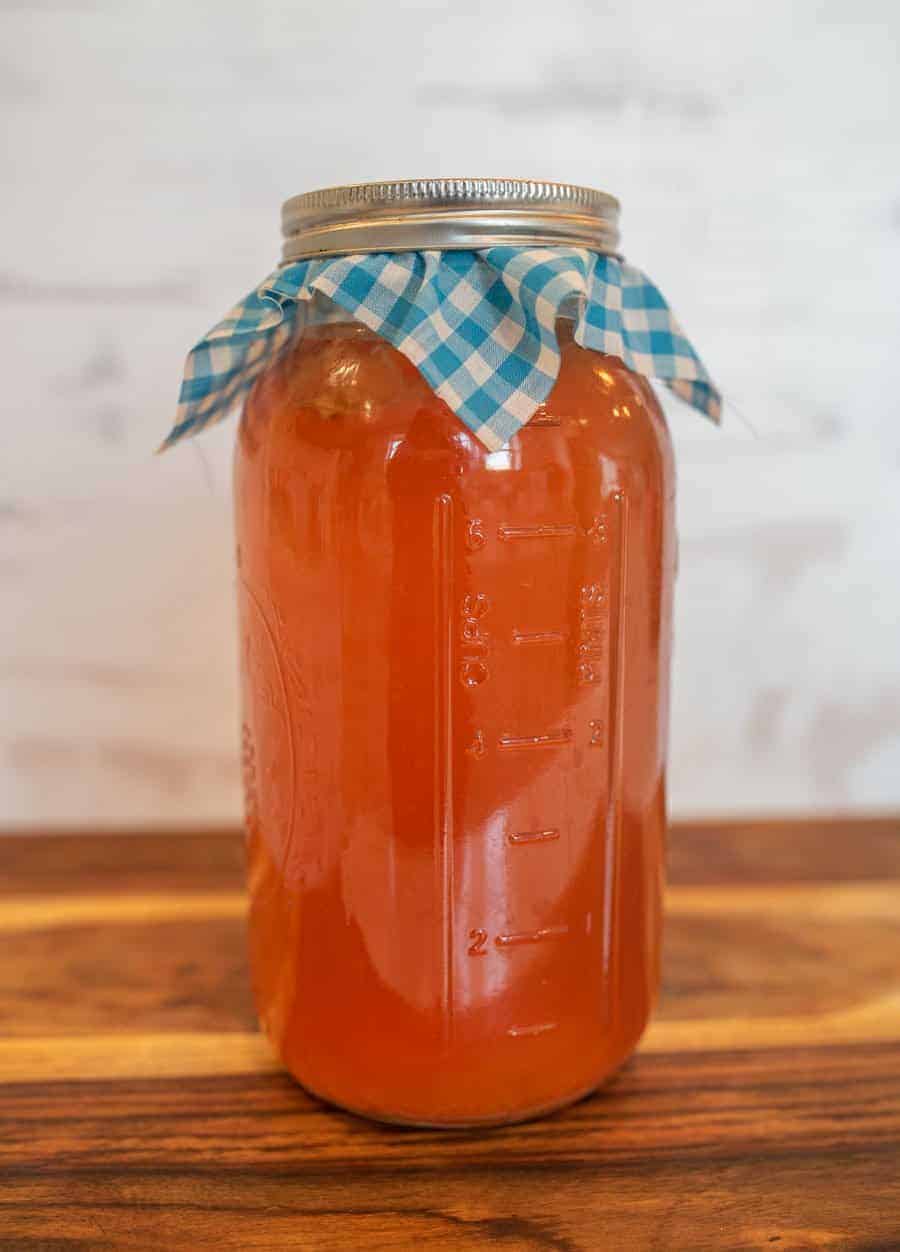
Small Batch Kombucha Brewing Method
Let’s get nerdy here. Kombucha starts as a sweet tea, and with the help of a SCOBY, it turns into something amazing.
The method in this post is batch brewing and will make 1/2 gallon of kombucha every 5-7 days.
If you do a second ferment with fruit, you’ll end up with three 16-ounce bottles every 5-7 days. This is a great amount for one to two people a week.
During the first fermentation of the double-fermentation process (also called the primary fermentation), the sweet tea and SCOBY are in a vessel that is protected from contamination like dust and fruit flies but not sealed. It is an aerobic (with oxygen) fermentation process. At the end of primary fermentation, the kombucha is technically ready to go. You can enjoy it then if you wish!
However, most people enjoy it carbonated and flavored, which is where the secondary fermentation comes in. I always do a second ferment! We love all of the flavors we can make at home.
For secondary fermentation, the finished first-ferment kombucha is added to airtight bottles. A couple of ounces of pureed fruit, whole chunks of fruit, or fruit juice are often added at this stage as well.
By enclosing the kombucha in an anaerobic (without oxygen) environment and feeding it a little fresh sugar (in the form of fruit), yeasts convert that sugar into carbon dioxide. The sealed bottle prevents the carbon dioxide from escaping, leading to carbonation.
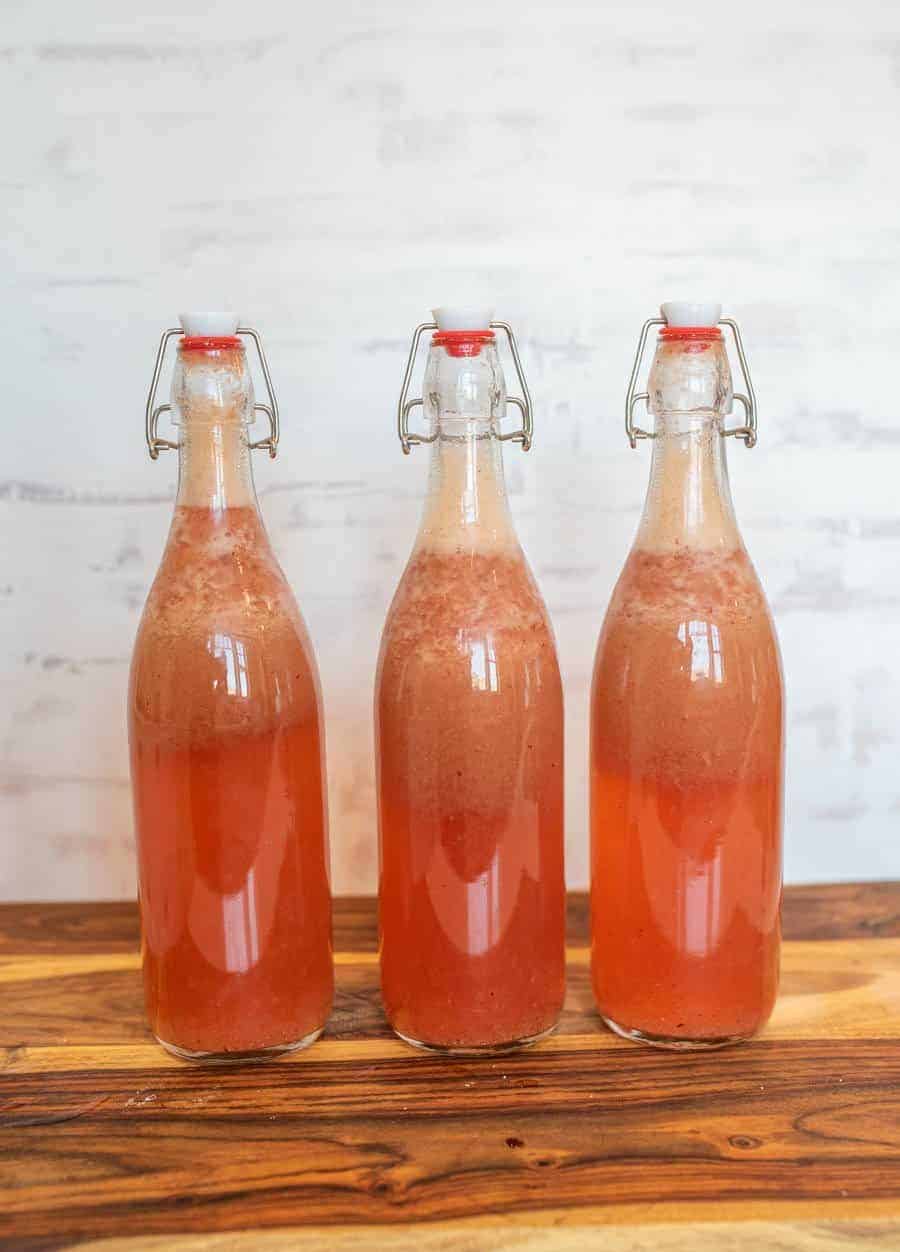
A Note About Caffeine
Properly fermented, finished kombucha should contain less than 1/3 of the caffeine concentration than when initially started! I’m sensitive to caffeine, and kombucha doesn’t bother me.
That being said, the SCOBY is healthiest when it has some caffeine in the tea, so to reduce the amount, use 1/3 black tea and a white and green tea mix for the other 2/3.
I also have luck using 1/3 hibiscus tea—it makes the kombucha a beautiful color, too! You can play around with it.
Best pH Levels for Finished Kombucha
According to experts, the proper pH level of finished kombucha is between 2.5 and 3.5. I don’t check mine often but it’s fun to know.
You can just use simple pH test strips to get this number. It’s fun to test a few times during the brew cycle to see how it changes. Again, it’s not necessary, but it is interesting.
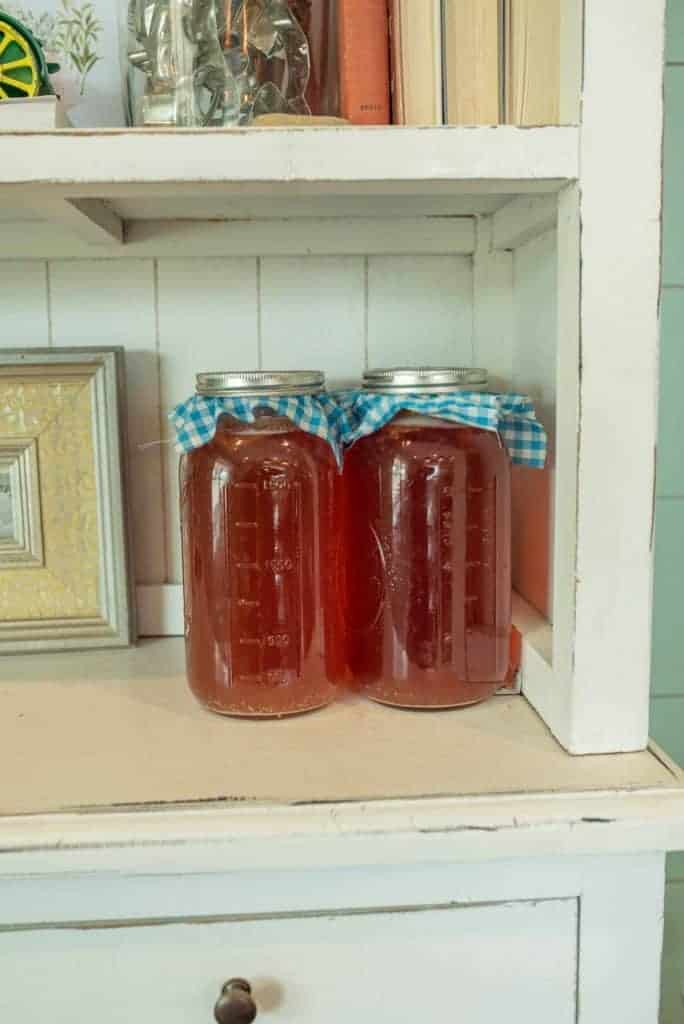
Handy Kombucha Making Chart

Please ask more kombucha-making questions in the comments. I’ll answer and add them here to make this post as complete as possible.
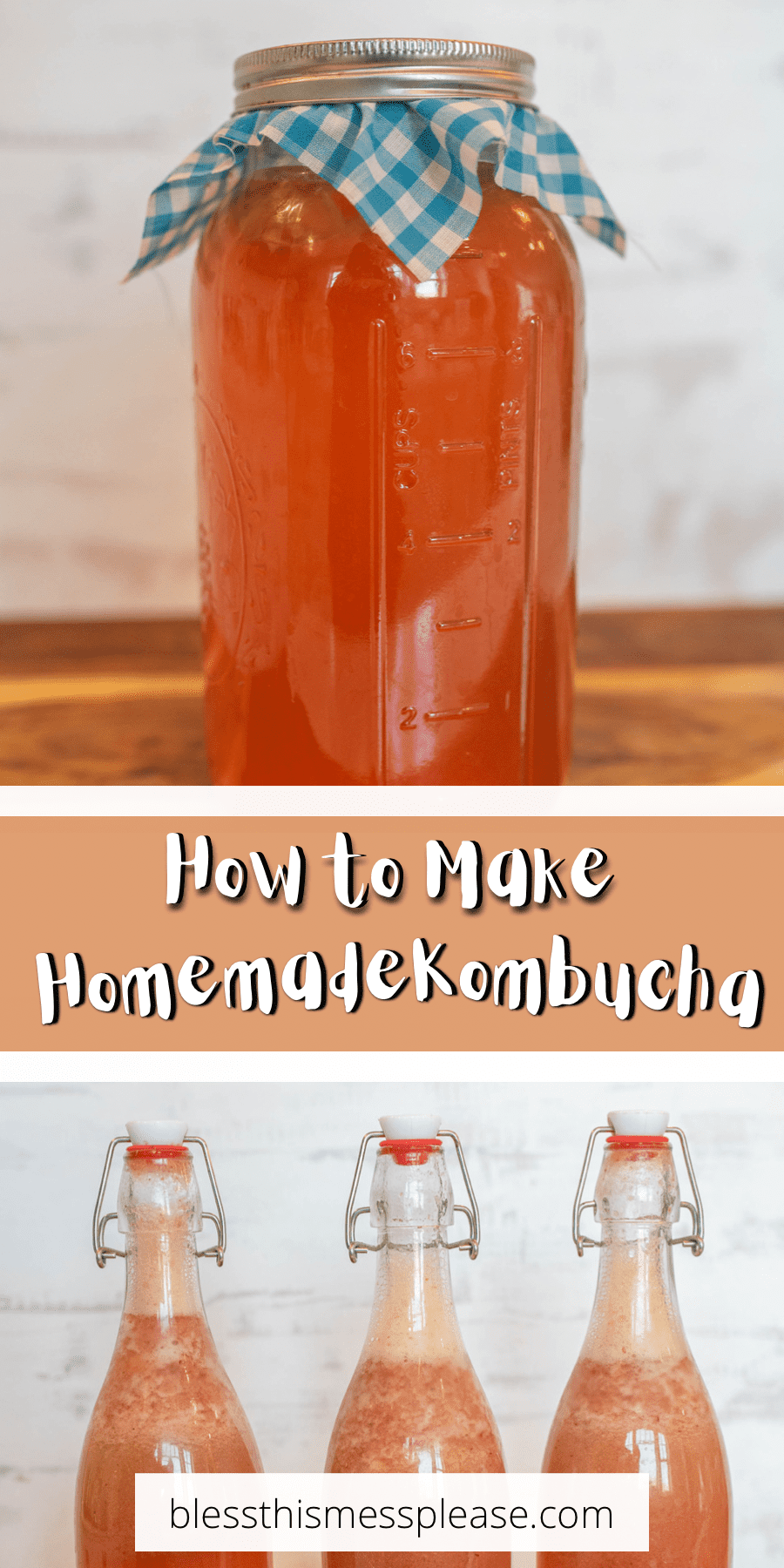
More Fermenting Recipes to Consider
Preserving Guide
How To Preserve Cabbage
Fermented Foods
Grandma-Approved Easy Fermented Pickles Recipe
Did you make this recipe? Leave a ⭐️ review and share it on Instagram, Facebook, or Pinterest!
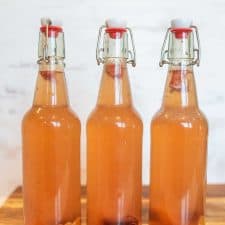
How to Make Kombucha at Home
Ingredients
- 2-3 tea bags or 1 tablespoon loose leaf tea*
- 1/3 cup sugar*
- 1 small SCOBY
- ½ to 1 cup starter liquid, (raw unflavored kombucha)
- Water to fill jar*
Instructions
- Work with clean hands and utensils, but don’t use anti-bacterial soaps. Hot water is best for cleaning.
- Add the tea bags and sugar to a 4-cup container and add 3 cups boiling water. Steep for 5 minutes. Remove the tea bags. Let mixture cool.
- IF this is your very time making kombucha you will need to buy a SCOBY and starter liquid or get one from a friend. Place the starter liquid in a 1/2 gallon jar. If this is not your first kombucha ferment, remove the SCOBY from your half gallon jar and place it on a clean surface. Place your kombucha that has been through it’s first ferment in a clean jar for drinking or in brewing bottles for a second ferment to flavor. Reserve 1 cup first ferment kombucha (just leave it in the jar).
- When the tea cools, add it to the starter kombucha in the 1/2 gallon jar and then fill the jar with more water until it is 1 inch or so from the top.
- Gently place the SCOBY in the jar and secure a breathable tightly woven cloth or coffee filter over the top. Let ferment 3-7 days at room temperature.
- TIP: to speed the process you can add cold water to the jar with the remaining liquid (about half full) and then add the hot sweet tea mixture on top. You only want your starter liquid to get warm though, adding very hot water to it will kill the live and active cultures.
TO FLAVOR AND SECOND FERMENT:
- A half gallon of first fermented kombucha will fill three 16-ounce brewing bottles, fill to just where the neck starts to curve.
- Add a few ounces of fruit chopped into small pieces, fruit puree, or fruit juice. It should fill the bottle 1-2 inches from the top. You can also add things like herbs, turmeric, ginger, or edible flowers.
- Secure the caps to the brewing jars and ferment for another 3-7 days at room temperature.
Video
Notes
- *Use black tea or a mix of black/green/white teas, organic is best.
- *Organic sugar is best.
- *If water is chlorinated you can leave it out at room temperature overnight to dechlorinate, if you think your water is heavily treated consider using filtered or distilled water
- Kombucha will ferment faster in warmer weather and slower in cold (ideal brewing temperature is 68-78 degrees).
- The larger the SCOBY, the faster the brewing cycle.
- A new SCOBY layer will form on top of your jar. You can keep the layers in a second jar (called a SCOBY hotel) as a backup or a way to share. Just add a little raw first-fermented kombucha to the jar as needed. If sharing your kombucha, the new owner will need a SCOBY AND 1 cup of “starting liquid” or first-fermented kombucha.
- Sometimes there is dark yeast at the bottom of the jar or stringy dark yeast on the bottom of the white/grey/peachy SCOBY — this is normal.
- Mold is NOT good. Throw away any kombucha and SCOBYs that mold (this isn’t common). It might look like colors on the SCOBY or floral blooming dots. Acquaint yourself with what yeast in kombucha might look like.
- My favorite resource on kombucha is The Big Book of Kombucha: Brewing, Flavoring, and Enjoying the Health Benefits of Fermented Tea Book by Alex LaGory and Hannah Crum.

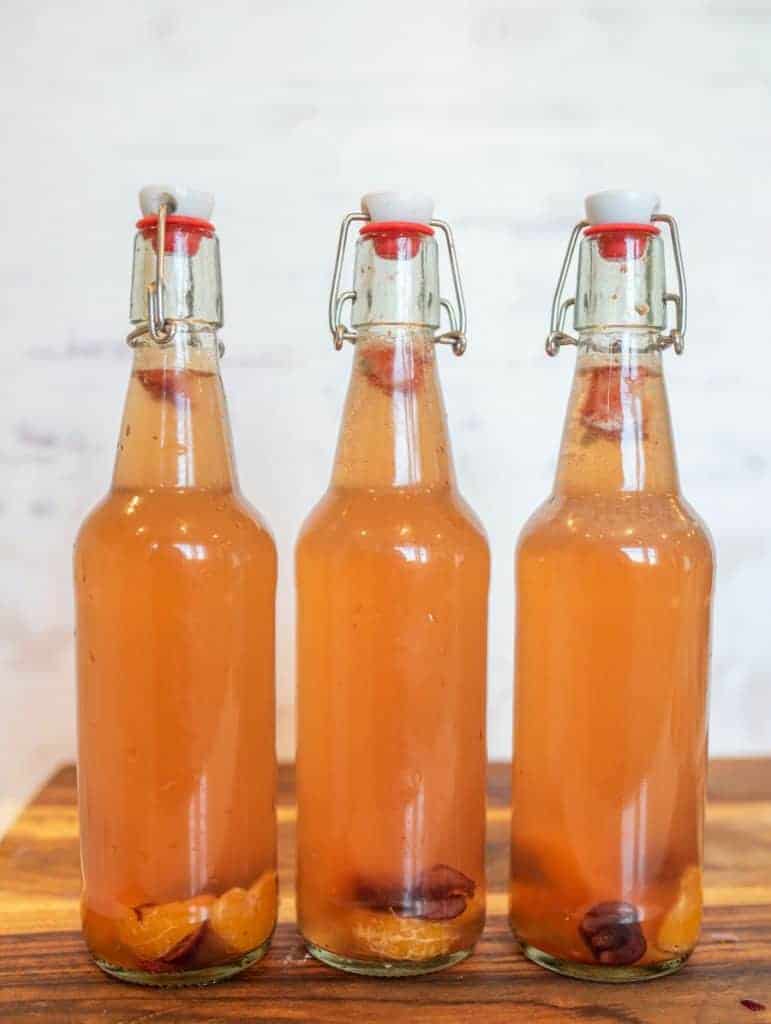
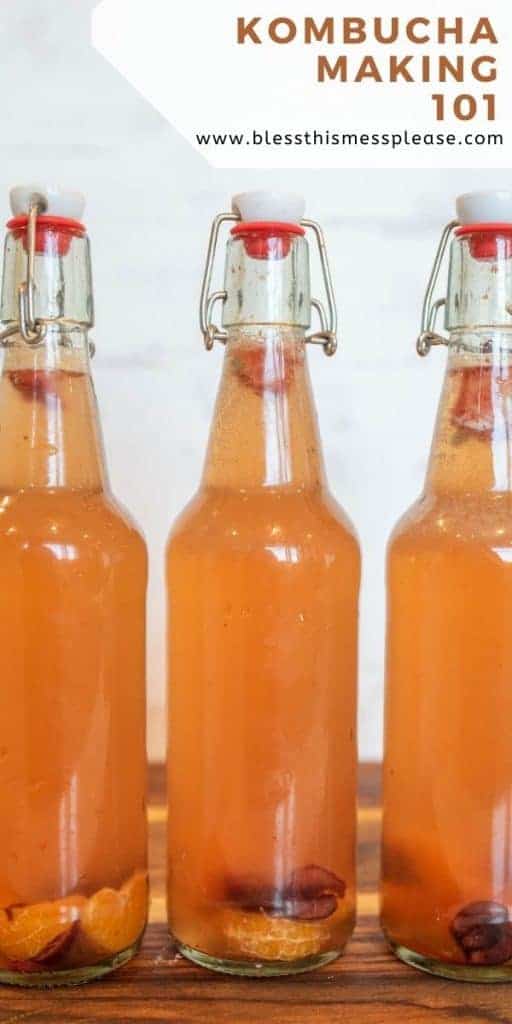
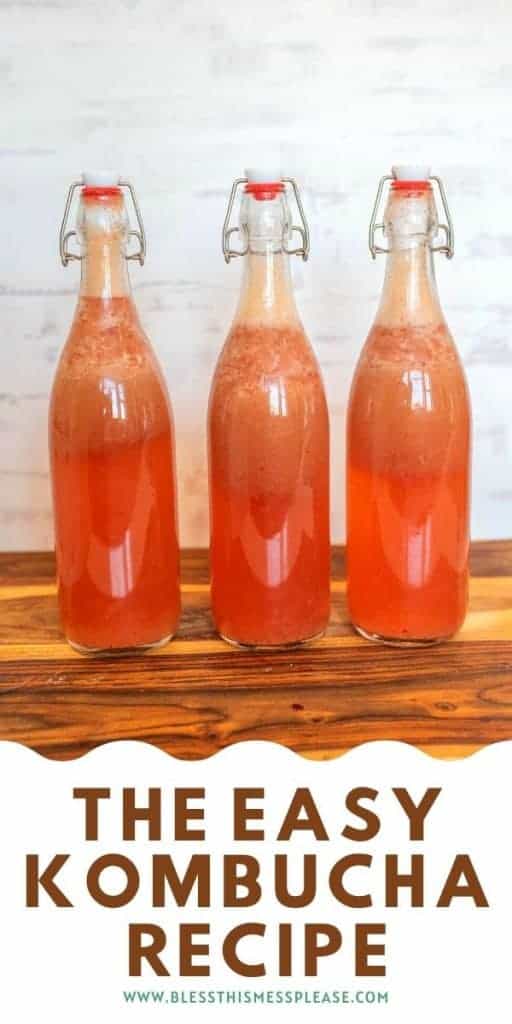
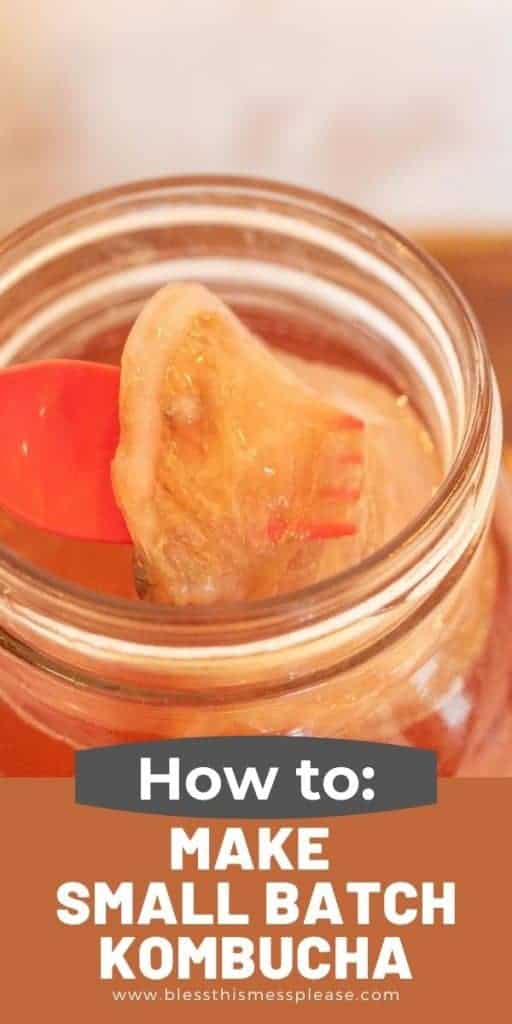
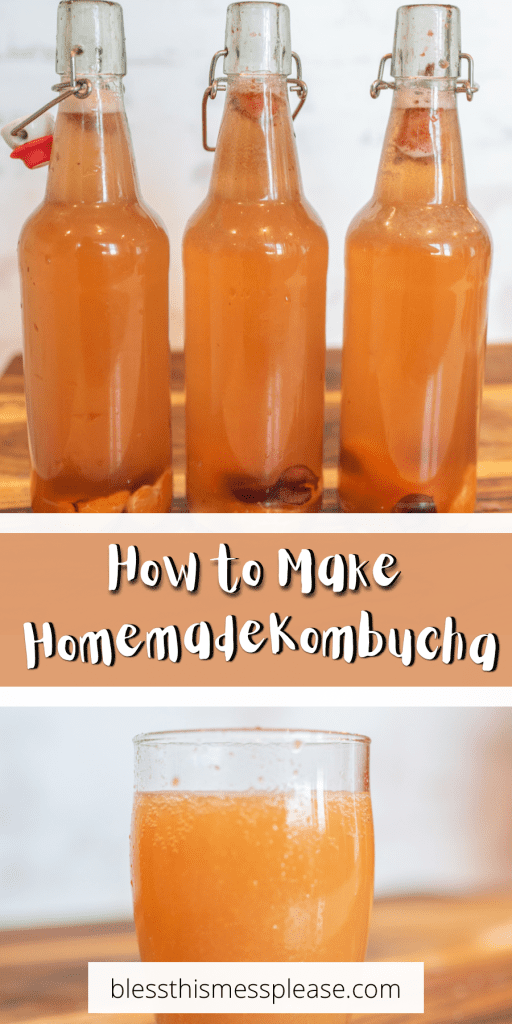
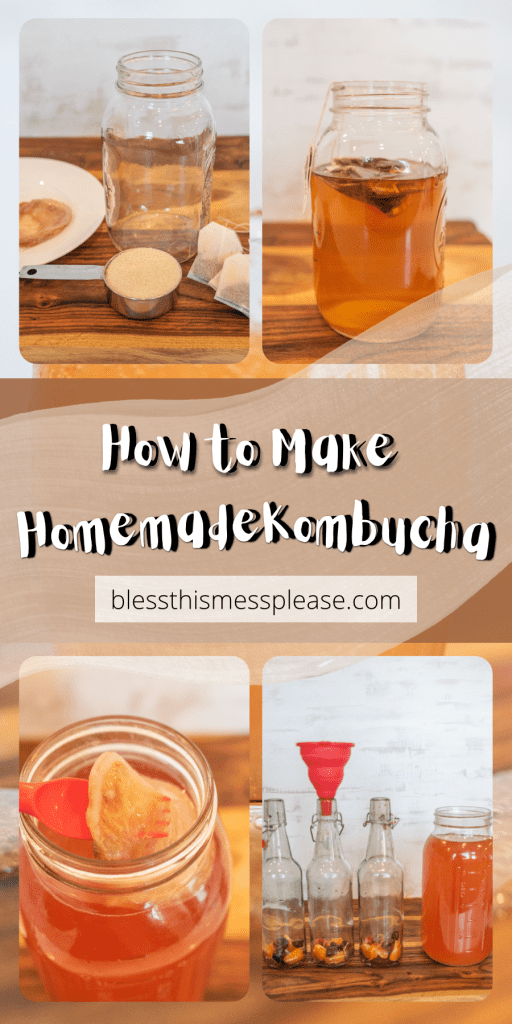
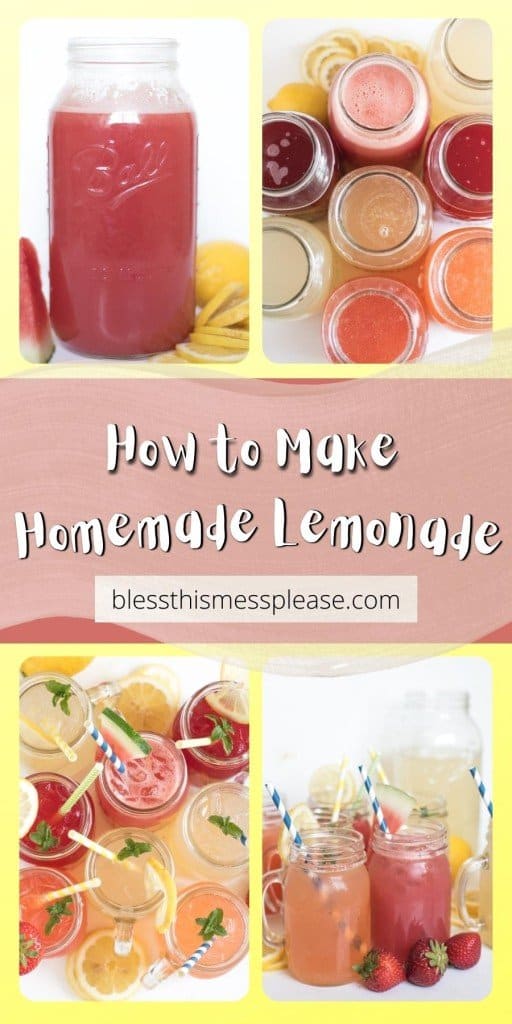
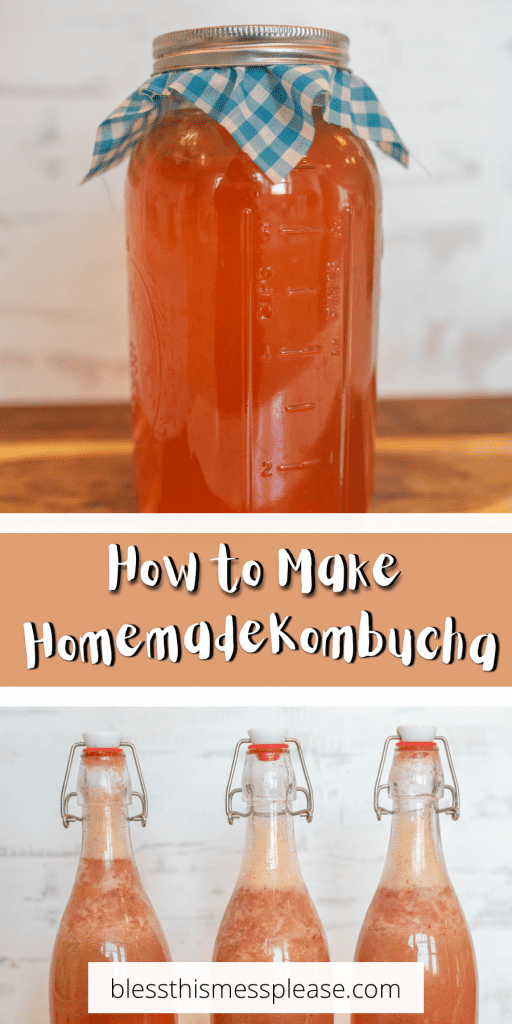
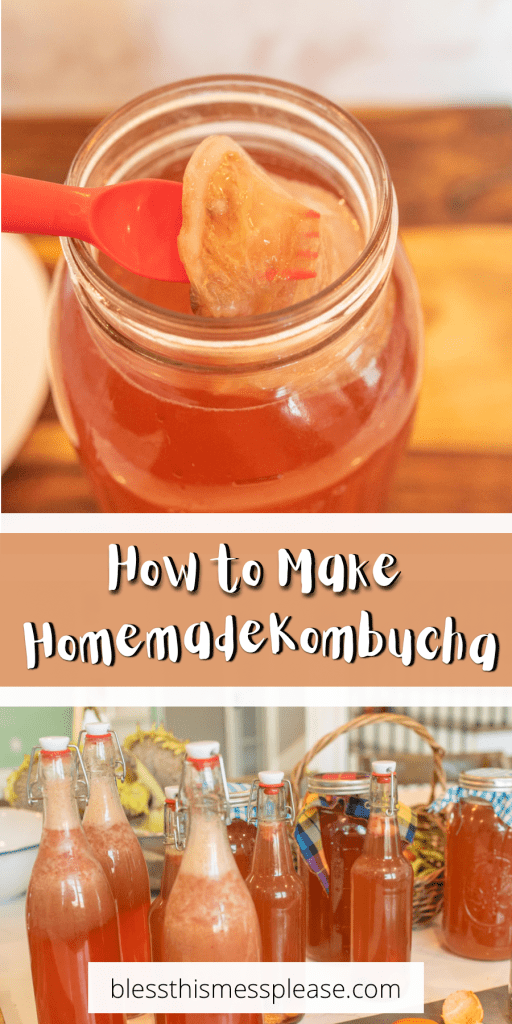
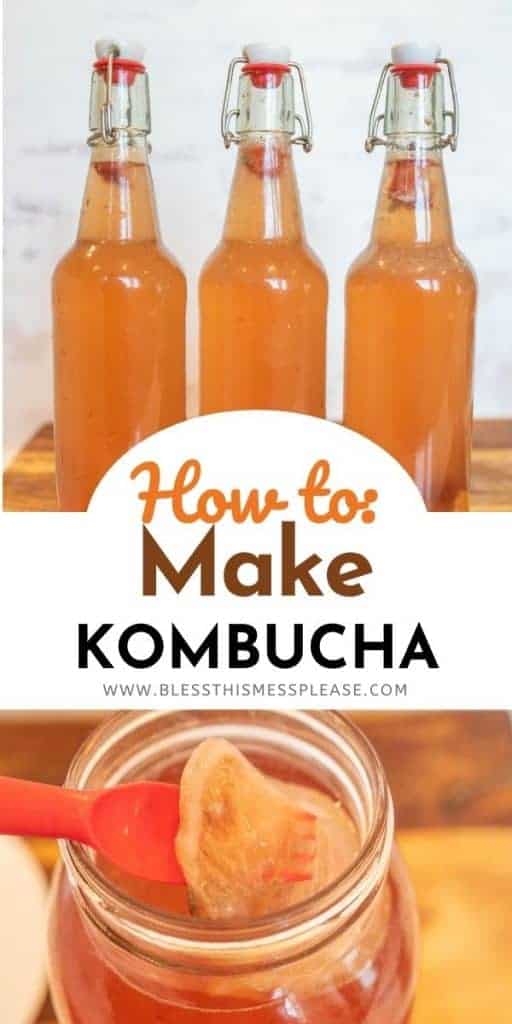
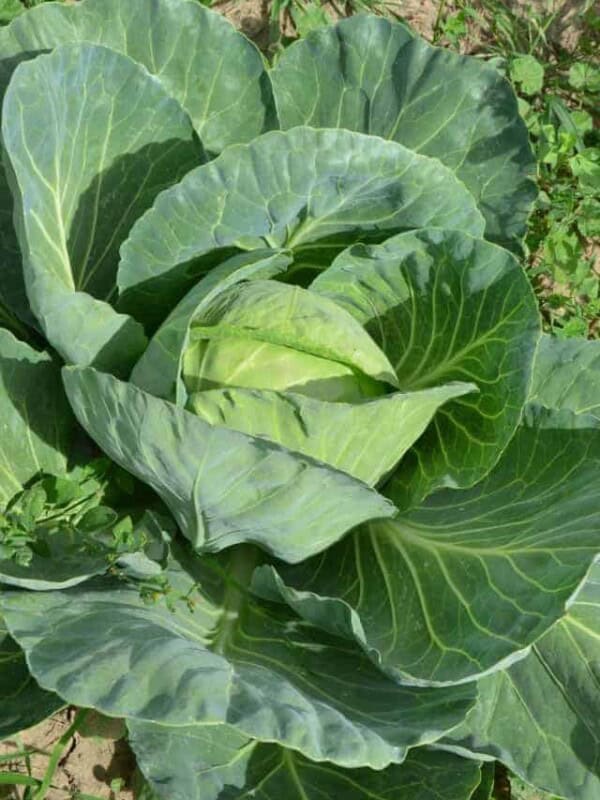
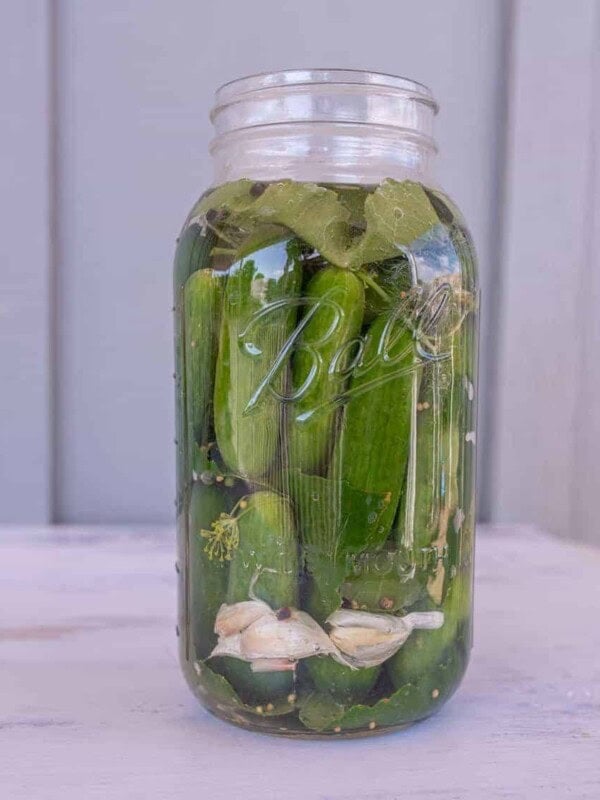






In chart from book, what is CB? I.e. ” too small for CB?
CB= continuous brew which is not the method that I’m teaching here